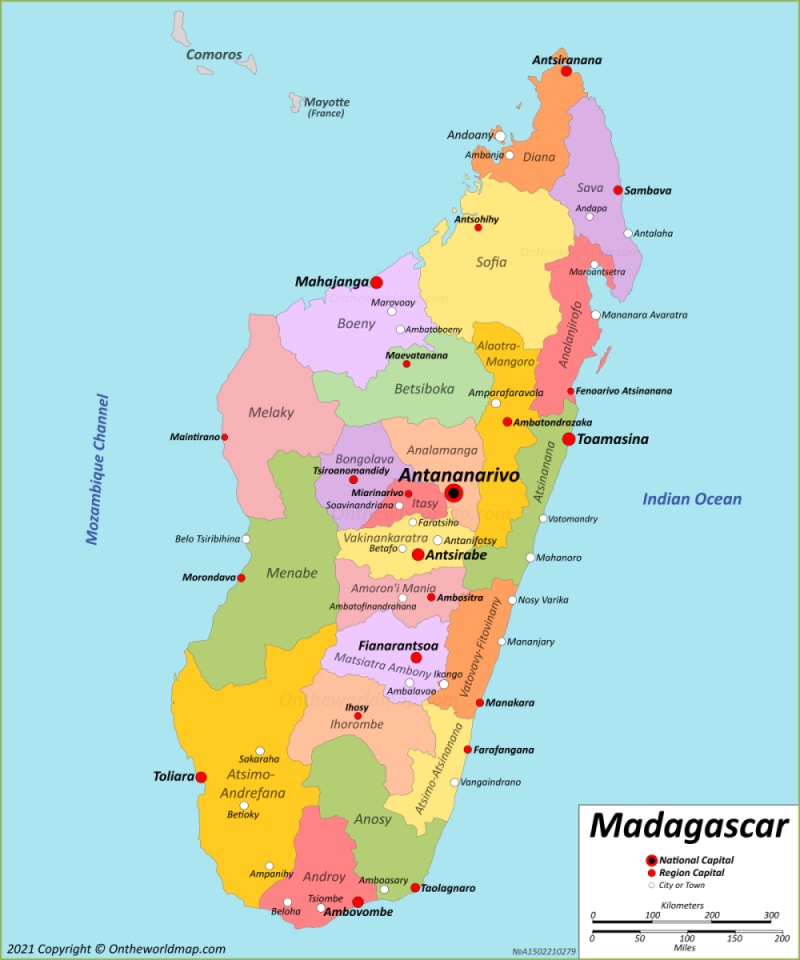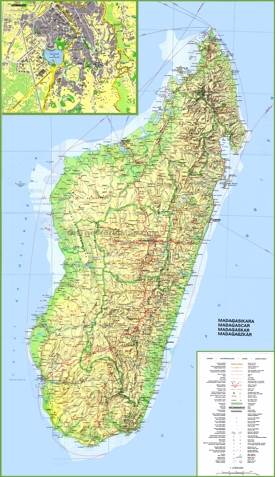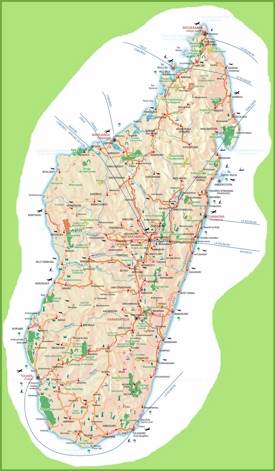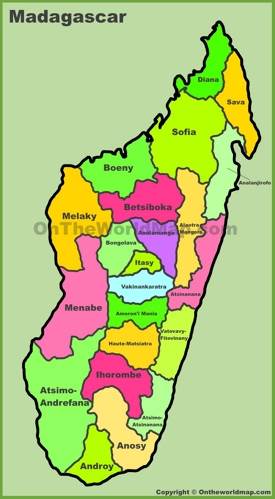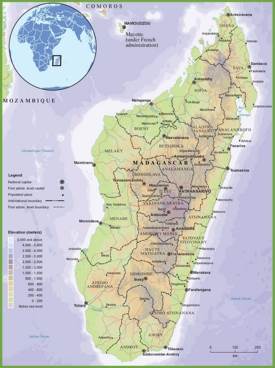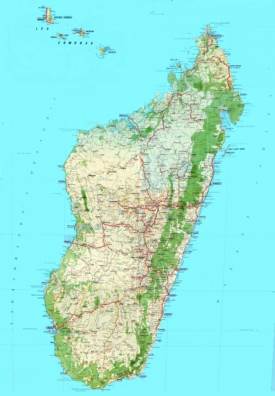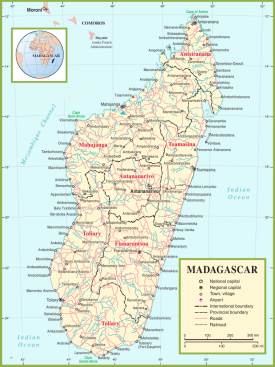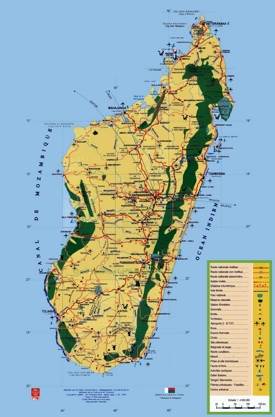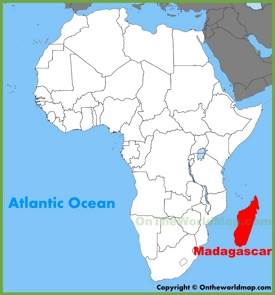Madagascar Map
Description:
This map shows governmental boundaries of countries; regions, region capital cities, major cities and towns in Madagascar.
Size: 1400x1680px / 587 Kb
Author: Ontheworldmap.com
You may download, print or use the above map for educational, personal and non-commercial purposes. Attribution is required. For any website, blog, scientific research or e-book, you must place a hyperlink (to this page) with an attribution next to the image used.
Online Map of Madagascar
Detailed Maps of Madagascar
About Madagascar
Madagascar is an island nation in the Indian Ocean, located off the southeastern coast of Africa. It is the fourth largest island in the world and has no land borders with any country.
Antananarivo, the capital and largest city, serves as the political and economic center. Other significant cities include Tuamasina, a major port city, and Antsirabe, known for its thermal springs and agricultural activities.
Madagascar's economy relies heavily on agriculture, mining, and tourism. Major agricultural products include vanilla, coffee, and cloves, while the mining sector specializes in ilmenite, nickel, and sapphires. Efforts to diversify the economy include the development of textile and manufacturing industries.
Tourism plays an important role in Madagascar's economy, attracting visitors with its unique biodiversity and natural attractions. The island is home to over 90% of wildlife species found nowhere else on Earth, including lemurs and baobabs. Highlights include the Avenue of Baobabs, Andasibe-Mantadia National Park and Tsingy de Bemaraha, a UNESCO World Heritage Site with impressive limestone formations.
Madagascar's infrastructure development remains a priority to support economic growth and improve connectivity. The government seeks to address issues such as poverty and environmental conservation, balancing development and preservation of unique ecosystems. The country's rich biodiversity and unique natural heritage continue to attract international attention and investment.
The Facts:
| Capital: | Antananarivo |
| Area: | 228,880 sq mi (592,796 sq km) |
| Population (2024): | 31,964,956 |
| Official language: | Malagasy, French |
| Currency: | Ariary (MGA) |
| Driving side: | right |
| Calling code: | +261 |
| Internet TLD: | .mg |
| Time zone: | UTC+3 (EAT) Summer (DST) UTC+3 |
| Gross domestic product 2023 (PPP): |
|
| Gross domestic product 2023 (nominal): |
|
Largest cities: Antananarivo, Toamasina, Antsirabe, Mahajanga, Fianarantsoa, Toliara, Antsiranana, Andoany, Sambava, Taolagnaro.
Regions of Madagascar: Diana, Sava, Itasy, Androy, Anosy, Totals, Analamanga, Vakinankaratra, Bongolava, Sofia, Ihorombe, Menabe, Atsimo-Andrefana, Boeny, Betsiboka, Melaky, Haute-Matsiatra, Vatovavy-Fitovinany, Atsimo-Atsinanana, Alaotra Mangoro, Atsinanana, Analanjirofo, Amoron'i Mania.
Former Provinces of Madagascar: Antananarivo, Antsiranana, Fianarantsoa, Mahajanga, Toamasina, Toliara.
Geography of Madagascar
Madagascar, located off the southeastern coast of Africa, presents a variety of geographic regions and climates. The island's topography includes the central highlands, eastern rainforests, western arid regions, and southern deserts. The central highlands, where the capital city of Antananarivo is located, consists of plateaus and volcanic formations, offering a temperate climate with cooler temperatures.
The eastern region, characterized by lush rainforests, has a tropical climate with high humidity and high rainfall, contributing to rich biodiversity. In contrast, the western and southern regions are characterized by drier climates dominated by deciduous forests and savannahs. The southwest, in particular, has an arid climate, with thorn forests adapted to low rainfall.
Madagascar's climate varies considerably in these regions, influenced by altitude and ocean currents. The island experiences seasonal cyclones, mainly affecting the east coast between November and April. This geographic and climatic diversity contributes to the unique ecosystems and endemic species on the island, making Madagascar a critical region for conservation and ecological study.
Brief History of Madagascar
Madagascar's history reflects a mixture of African, Asian and European influences. Austronesian settlers from Southeast Asia arrived around the first millennium AD, followed by Bantu migrants from East Africa. These groups established small kingdoms and formed a unique Malagasy culture. By the 16th century, European explorers, including the Portuguese and French, began to visit the island.
In the 19th century, the kingdom of Merina united most of Madagascar under King Radama I. The French colonized Madagascar in 1896, incorporating it into their colonial empire. In 1960, Madagascar gained independence and became a republic. Since independence, the country has experienced periods of political instability and economic problems. Despite these challenges, Madagascar continues to strive for political stability and economic development while preserving its unique cultural heritage.

